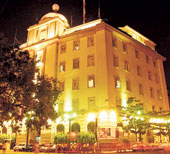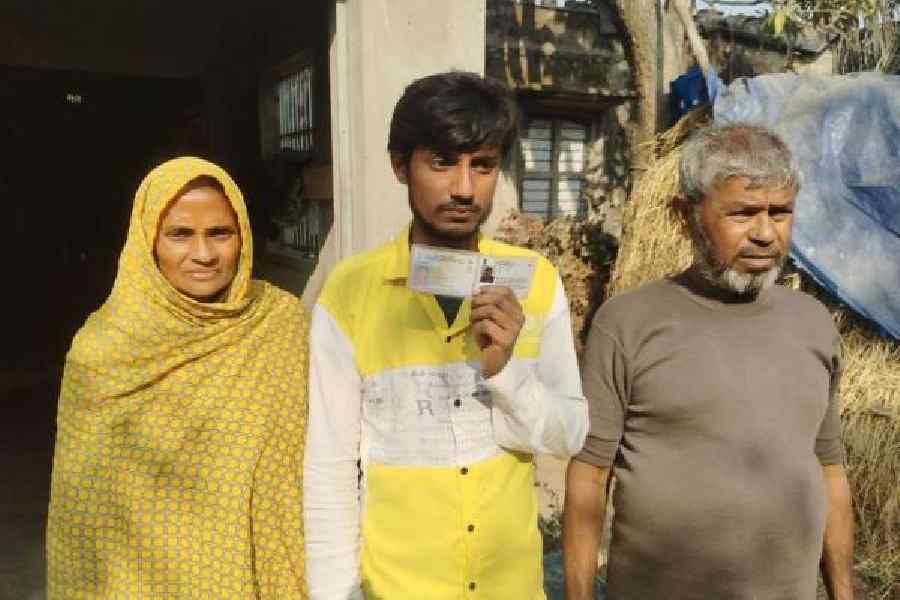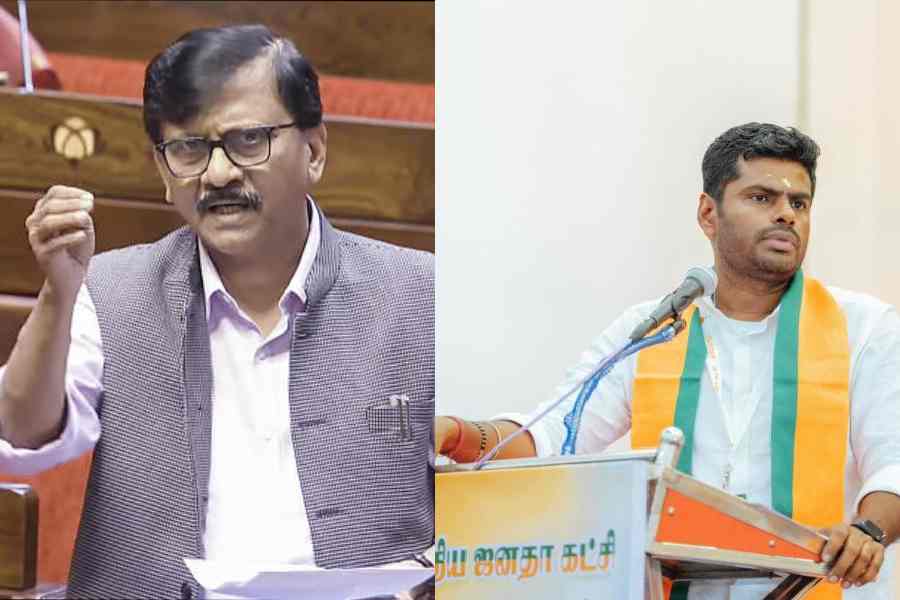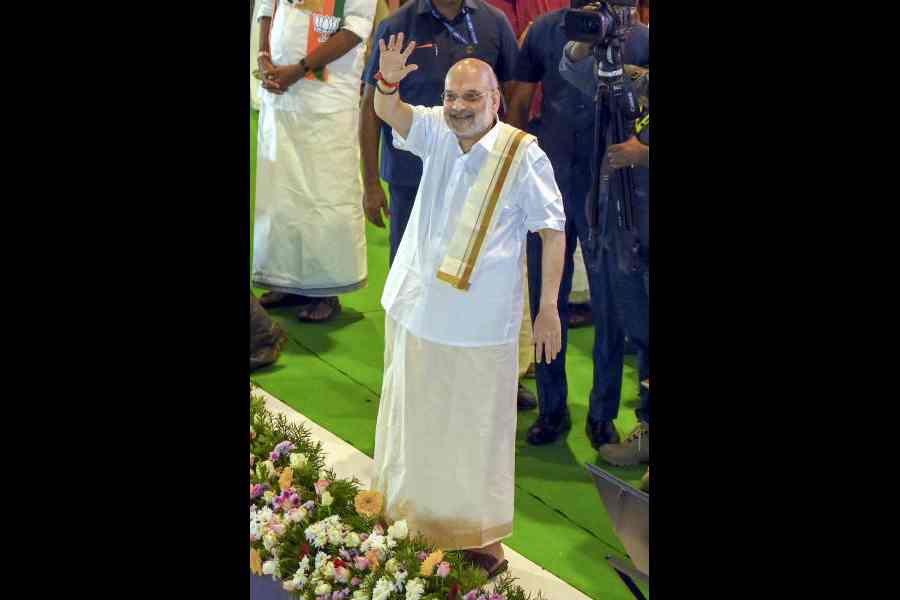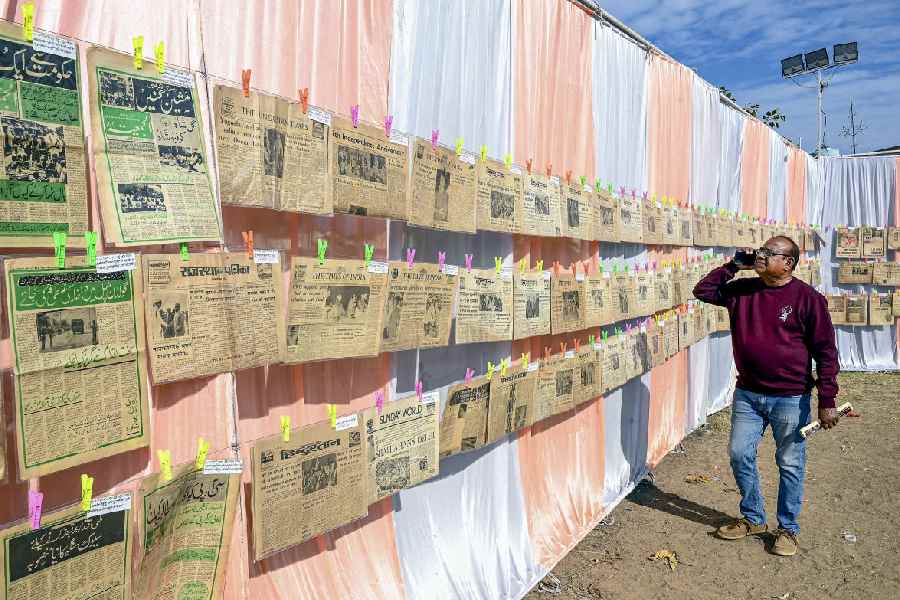 |
| Victoria House, renamed CESC House, is the headquarters of CESC and (below) the first CESC generating station on Prinsep Street. Pictures by Pabitra Das and Aranya Sen |
 |
Back in the 1940s, the Calcutta Electric Supply Corporation, better known as CESC, used to promote the use of electricity in households through an advertisement that went thus: “Were the ‘Good old days’ really good old days?”
In other words, the burden of life was easier to bear by using electricity that was already available in the Forties. As a matter of fact, by the late 1920s electric lights lit up the streets not only in the European quarters of central Calcutta but in the “native” neighbourhoods as well.
People who have been thrown back to the “age of darkness” in the past one week and more, would wonder if at all the ad line is applicable to today’s situation. We can only hark back to the 1940s as the good old days, for the dark ages began about 20 years later in the late 1960s. There was some relief from “loadshedding”, a word also used in South Africa, in the late 1980s. But now the “powerlessness” is back again with a vengeance.
Long before power came to the people, gas lamps used to glow after sunset in many thoroughfares, although some central districts like the Amherst Street-Bowbazar areas remained benighted.
P.W. Fleury And Company gave the first demonstration of electric lights in Calcutta on July 24, 1879. By 1885, a company started by Bengali entrepreneurs Dey, Sil & Co, which had its office at 36 Wellington Street, was providing brilliant illumination for marriage processions in Chitpur. Rabindranath Tagore had actually sung some of his own compositions to mark the lighting of the second national Congress in 1886. And at Queen Victoria’s jubilee the next year, the Darbhanga maharaja’s house on Middleton Street was one of the few buildings in Calcutta to be lit up.
According to a brochure published by CESC when it turned 100 in 1999, the Government of Bengal passed the Calcutta Electric Lighting Act in 1895, and the first licence for 21 years covered an area of 5.64 sq miles, which has now grown to 567 sq km.
On January 7, 1897, Kilburn & Co secured the Calcutta electric lighting licence as agents of the Indian Electric Co, which was registered in London on January 15, 1897. A month later, the company was renamed the Calcutta Electric Supply Corporation. The control of the company was transferred from London to Calcutta only in 1970.
The first generating station was at Emambaugh Lane near Prinsep Street, which was commissioned on April 17, 1899.
By 1901 there were only 708 domestic subscribers, perhaps because of the steep tariff — eight annas per unit, shaved to 2 ½ annas by 1937. So in 1901, the company employed canvassers to attract customers.
But before that, a European from the telegraph department named Carl Louis Schwendler (1838-1882), who was one of the founders of the zoological gardens, lit up a godown in Howrah station with dynamo electric machines and ran an electric train for joyrides in the zoo. He praised the ingenuity of “native” electrical hands who had assisted him in the railways project.
The first street to be lit was Harrison Road (Mahatma Gandhi Road) and Jagadish Chandra Bose was the municipal consultant of Kilburn & Co. The Bank of Bengal, which later became the State Bank of India, and the Bengal Club were being supplied power on a trial basis by the late 19th century.
The British company, however, avoided supplying power to slums as it was not profitable. Enthused by the success of electricity in Calcutta, power was thereafter introduced in Bombay. Think of the irony of it.

